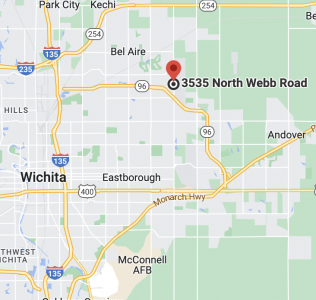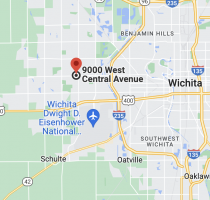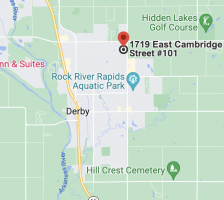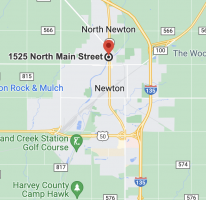We understand you probably have a lot of questions about your health. We strive to provide a wealth of helpful information in our learning center and update content regularly.
Aneurysm
An aneurysm is an abnormal dilation or “ballooning” in the wall of an artery. An aneurysm can grow and may rupture causing dangerous bleeding inside the body that can be fatal. Most aneurysms occur in the aorta, the main artery that carries blood from the heart to the rest of the body. Aneurysms can often be detected by Xray, CT or ultrasound. Treatment can be either medical to reduce blood pressure and decrease the chance of rupture or surgery to repair the dilated aneurysmal vessel.
Aortic aneurysm and Aortic dissection
Angina (chest pain)
Angina is a type of chest pain caused by reduced blood flow to the heart muscle. Angina is a symptom of coronary artery disease. Angina is typically described as squeezing, pressure, heaviness, tightness or pain in your chest. There are two types of angina – stable and unstable. Angina is relatively common but can be hard to distinguish from other types of chest pain, such as the pain or discomfort of indigestion.
Angina Animation
Aortic stenosis
Aortic stenosis occurs when the heart’s aortic valve narrows. This narrowing prevents the valve from opening fully, which obstructs blood flow from your heart into your aorta and onward to the rest of your body. When the aortic valve is obstructed, your heart needs to work harder to pump blood to your body. Eventually, this extra work limits the amount of blood it can pump and may lead to symptoms, such as chest pain, shortness of breath, fatigue, dizziness, or fainting (syncope). If you have severe aortic valve stenosis, you will need to have this corrected. Left untreated, aortic valve stenosis can lead to serious heart problems.
Aortic valve stenosis animation
Arrhythmia
An arrhythmia is a problem with the speed or rhythm of the heartbeat. During an arrhythmia, the heart can beat too fast, too slow, or with an irregular rhythm. An arrhythmia occurs because the heart’s electrical conduction system is not working properly. They can be harmless or life-threatening. Tests such as EKGs, stress tests and electrophysiologic studies are used to diagnose causes of arrhythmias.
Understanding arrhythmias
Atrial fibrillation
Atrial fibrillation is a common heart rhythm disorder. In atrial fibrillation, the electrical signal in the heart either does not begin where it should or is not conducted properly, leading to a very fast rate and causes the walls of the atria to quiver quickly (fibrillate) and makes them unable to effectively pass blood into the ventricles. The two most common complications of long-term atrial fibrillation are heart failure and stroke. Stroke can result from atrial fibrillation because when the atria are fibrillating, clots can form there and could travel to the brain causing a stroke. Atrial fibrillation can be caused by conditions such as high blood pressure (hypertension), coronary artery disease, heart failure, diabetes, and obesity.
Atrial fibrillation can be occasional (“paroxysmal”) or persistent. It can be asymptomatic or cause symptoms, such as palpitations, chest pain or shortness of breath. Treatment and management includes preventing blood clots, controlling heart rate and restoring a normal heart rhythm. To restore normal heart rhythm medications (“antiarrhythmics”) may be effective but when medication is ineffective other treatments can include
cardioversion (an electrical current used to reset the hearts normal rhythm), ablation therapy (a minimally invasive procedure), or open-heart or minimally-invasive surgery.
What is AF?
Atrial flutter
Atrial flutter is similar to atrial fibrillation. Both can occur, coming and going in an alternating fashion. The heartbeats in atrial flutter are more-organized and more-rhythmic electrical impulses than in atrial fibrillation. Generally, treatment strategies are similar to those in atrial fibrillation. Ablation therapy tends to be more successful in patients with atrial flutter.
Cardiomyopathy
In cardiomyopathy, the heart muscle becomes enlarged or abnormally thick or rigid. There are three main types of cardiomyopathy — dilated, hypertrophic and restrictive. Cardiomyopathy makes it harder for the heart to pump blood and deliver it to the rest of the body and can lead to heart failure. Some people who develop cardiomyopathy have no signs and symptoms during the early stages of the disease. But as the condition advances, signs and symptoms usually appear and may include shortness of breath, palpitations, swelling of the extremities, abdominal fullness/bloating, fatigue, dizziness, lightheadedness, or fainting.
Congenital heart disease
Congenital heart defects are problems with the heart’s structure that are present at birth. These defects can involve the interior walls of the heart, valves inside the heart, or the arteries and veins that carry blood to the heart or out to the body. Congenital heart disease was often fatal, but it’s far more treatable today. Congenital heart disease can cause problems in children immediately after they are born or during childhood or adolescence. Sometimes it may not be diagnosed until adulthood. Although congenital heart disease is often considered a childhood condition, advances in surgical treatment mean most babies who once died of congenital heart disease survive well into adulthood.
Congestive heart failure
Heart failure refers to a large number of conditions which affect the structure or function of the heart, making it difficult for the heart to supply sufficient blood flow to meet the body’s needs. It occurs when one or more of the heart’s four chambers lose its ability to maintain proper blood flow. This can happen because the heart can’t fill well enough with blood or because the heart can’t contract strongly enough to propel the blood with enough force to maintain proper circulation. In some people, both filling and contraction problems can occur. The most common cause of heart failure is coronary artery disease. Other causes of heart failure include hypertension, valvular heart disease, infections, drug abuse, or arrhythmias. There are also many less common causes of congestive heart failure. There are many symptoms of heart failure including chest pain, shortness of breath, fatigue, swelling of the extremities, irregular heartbeat, cough or wheezing, abdominal swelling, decrease appetite, and poor sleep.
Congestive heart failure animation
Coronary artery disease
Coronary artery disease (CAD) develops when your coronary arteries — the major blood vessels that supply your heart with blood, oxygen, and nutrients become damaged or diseased. When plaque builds up in the coronary arteries, the heart receives less blood. Eventually, the decreased blood flow may cause chest pain (angina), shortness of breath, or other coronary artery disease signs and symptoms. A complete blockage can cause a heart attack. Risk factors for CAD include hypertension, diabetes, abnormal cholesterol, cigarette smoking, obesity, family history of CAD, age, and stress.
Coronary artery disease animation
Dyspnea (shortness of breath)
Dyspnea is often described as a tightening in the chest or feeling of suffocation. You may experience shortness of breath just once or have recurring episodes that could become constant. Typical causes are lung problems (asthma, bronchitis, COPD/emphysema, pneumonia) or heart problems (cardiomyopathy, heart failure, coronary artery disease, pulmonary hypertension). Other common causes include anemia or obesity.
Heart attack
A heart attack, or myocardial infarction, occurs when one or more coronary arteries become suddenly blocked, resulting in heart muscle death. Myocardial infarction results from coronary artery disease (CAD), which is an accumulation of plaque inside the coronary blood vessels. When one of these plaques rupture, a clot forms rapidly at the site and causes a sudden obstruction of blood flow in the coronary artery. Typical symptoms of a myocardial infarction include chest pressure or pain, shortness of breath, profound sweating, nausea, vomiting, and/or fainting. Without immediate treatment, a myocardial infarction can cause permanent damage to the heart muscle and chaotic, abnormal heart beating. Both conditions can be fatal.
What is a heart attack?
Hypertension (high blood pressure)
Blood pressure is determined by the amount of blood your heart pumps and the amount of resistance to blood flow in your arteries. The more blood your heart pumps and the narrower your arteries, the higher your blood pressure. Blood pressure numbers include systolic and diastolic pressures. Systolic blood pressure is the pressure when the heart beats while pumping blood. Diastolic blood pressure is the pressure when the heart is relaxing between beats. You can have high blood pressure (hypertension) for years without any symptoms. Uncontrolled high blood pressure increases your risk of serious health problems, including heart attack, stroke, aneurysms, and kidney failure.
5 major effects of high blood pressure
Mitral valve prolapse
Mitral valve prolapse (MVP) occurs when the valve between your heart’s left upper chamber (left atrium) and the left lower chamber (left ventricle) doesn’t close properly. During mitral valve prolapse, the mitral valve bulges (prolapses) upward, or back into the atrium. MVP sometimes leads to blood leaking backward into the left atrium, a condition called mitral valve regurgitation. Symptoms may include palpitations, dizziness or lightheadedness, shortness of breath, chest pain or fatigue. This condition is typically diagnosed with an echocardiogram. In most people, mitral valve prolapse isn’t life-threatening and doesn’t require treatment or changes in lifestyle. Some people with mitral valve prolapse, however, require treatment.
Murmurs
A murmur is a sound which can be heard through a stethoscope while listening to the heart. The sound is usually created by blood moving through heart valves. Most murmurs do not indicate a serious problem. In some cases, significant heart valve abnormalities or congenital heart defects may first be detected because of a heart murmur.
What is a heart murmur and how does it relate to valve problems?
Palpitations
A sensation in which a person is aware of an irregular, hard, or rapid heartbeat. It can appear to skip beats, beat rapidly, beat irregularly, or thump in the chest. Palpitations can be caused by anxiety, arrhythmias, caffeine, certain medications, cocaine and other amphetamines, emotional stress, overeating, panic, somatization, and vigorous exercise. Dizziness, shortness of breath, and chest pain may be signs of more severe arrhythmias.
What are palpitations
Pericardial disease
Pericarditis is an inflammatory condition of the pericardium, the thin sac-like membrane that surrounds your heart. Pericarditis often causes chest pain. The sharp chest pain associated with pericarditis occurs when the inflamed or irritated two layers of the pericardium rub against each other. Causes of pericarditis include infections, autoimmune conditions, or following heart attacks or heart surgery. Mild cases may improve without treatment. Treatment for more severe cases may include medications and, rarely, surgery.
Pericardial effusion is the accumulation of excess fluid around the heart. Pericardial effusion is often related to inflammation of the pericardium, malignancy, or injury, but pericardial effusion can also occur without inflammation. When the volume of fluid exceeds the pericardium’s “full” level, pericardial effusion puts pressure on the heart, causing poor heart function. If left untreated, significant pericardial effusion can cause heart failure or death.
Peripheral arterial disease
Peripheral arterial disease (PAD) is a common circulatory problem in which narrowed arteries reduce blood flow to your limbs. When you develop PAD, your extremities — usually your legs — don’t receive enough blood flow to keep up with demand. This causes symptoms, notably leg pain when walking (claudication). Peripheral artery disease is also likely to be a sign of a more widespread accumulation of fatty deposits in your other arteries (atherosclerosis). This condition may be reducing blood flow to your heart and brain, as well as your legs. Early diagnosis and treatment of PAD are important to prevent disability and save lives. PAD can be treated with lifestyle changes, medicines, and/or surgery and special procedures.
Pulmonary embolism
Pulmonary embolism is a blockage in one or more arteries in your lungs. In most cases, pulmonary embolism is caused by blood clots that travel to your lungs from another part of your body — most commonly, your legs. Pulmonary embolism is a complication of deep vein thrombosis (DVT). Common signs and symptoms include sudden and unexplained shortness of breath, chest pain, and a blood-tinged cough. Pulmonary embolism can be life-threatening, but immediate treatment with anti-clotting medications can greatly reduce the risk of complications or death
What is a pulmonary embolism?
Pulmonary hypertension
Pulmonary hypertension is a type of high blood pressure that affects the arteries in the lungs and the right side of your heart. As the pressure builds, your heart’s lower right chamber (right ventricle) must work harder to pump blood through your lungs, eventually causing your heart muscle to weaken and fail. Causes of pulmonary hypertension include pulmonary embolus, COPD, connective tissue disorders, sleep apnea, congenital heart disease, chronic liver disease, interstitial lung disease, left-sided heart failure, or illicit drug use. Pulmonary hypertension is a serious illness that becomes progressively worse and is sometimes fatal. Although pulmonary hypertension isn’t always curable, treatments are available that can help lessen symptoms and improve your quality of life.
What is pulmonary hypertension
Rheumatic heart disease
Rheumatic heart disease may cause damage, inflammation, and scarring of various parts of the heart including the lining of the heart (pericardium), heart muscle (myocardium) and the heart valves that could occur during and following episodes of rheumatic fever from Goup A streptococcus.
Syncope (fainting)
Syncope is the abrupt and temporary loss of consciousness followed by a complete and rapid recovery. Syncope is most often benign. Vasovagal syncope is the most common cause of fainting and occurs when your body reacts to triggers such as heavy straining or emotional distress. In patients with risks for heart disease, additional cardiac testing is usually performed.
Tachycardia
Tachycardia is a faster than normal heart rate. A healthy adult heart normally beats 60 to 100 times a minute when a person is at rest. If you have tachycardia, the heart rate is increased significantly. Symptoms of tachycardia include dizziness, shortness of breath, lightheadedness, rapid pulse rate, palpitations, chest pain, or fainting. In some instances, the cause of a tachycardia is benign and physiologic. Occasionally, the cause of a tachycardia may be due to abnormal electrical pathways in the heart and would require further studies, medications, or procedures.
Ventricular tachycardia
Supraventricular tachycardia
Unstable angina
Angina pectoris is a symptom of chest pain or pressure that occurs when the heart does not receive enough blood and oxygen to meet its needs. Unstable angina occurs in unexpected or unpredictable times, such as at rest. The symptoms may be new, prolonged, more severe, or occur with little or no exertion. Unstable angina may also be less responsive to nitroglycerin. Unstable angina symptoms are a medical emergency and may be a precursor for a heart attack. Thus, medical attention should be sought immediately.
Valvular heart disease
Valvular heart valve disease is a condition in which one or more of your heart valves do not work properly. The heart has four valves: tricuspid, pulmonary, mitral, and aortic.
These valves have tissue flaps that open and close with each heartbeat. The flaps make sure blood flows in the right direction through your heart’s four chambers and to the rest of your body. Heart valves can have three basic kinds of problems:
• Regurgitation, or backflow, occurs when a valve doesn’t close tightly. Blood leaks back into the heart chamber rather than flowing forward through the heart or into an artery.
• Stenosis occurs when the flaps of a valve thicken, stiffen, or fuse together. This prevents the heart valve from fully opening, and not enough blood flows through the valve.
• Atresia occurs when a valve lacks an opening for blood to pass through.
Many people don’t have signs or symptoms of heart valve disease until they’re middle-aged or older and the disease becomes more severe. The main sign of valvular heart disease is a heart murmur. Other common signs and symptoms are fatigue, chest pain, shortness of breath, and swelling of your ankles, feet, or abdomen. Valvular heart disease can be diagnosed based on symptoms, a physical exam, and the results from tests and procedures.
Ventricular Fibrillation
Ventricular fibrillation is a heart rhythm problem that occurs when the heart beats with rapid, erratic electrical impulses. The heart is unable to effectively pump blood. Ventricular fibrillation is frequently triggered by a heart attack and is an emergency that requires immediate medical attention. A person with ventricular fibrillation will collapse within seconds and soon won’t be breathing or have a pulse. Emergency treatment for ventricular fibrillation includes cardiopulmonary resuscitation (CPR) and shocks to the heart with a device called a defibrillator. Subsequent treatments for those who survived ventricular fibrillation typically include medications and implantable devices that can restore a normal heart rhythm.
Ventricular fibrillation







